When I started blogging, I just wrote what came to my mind. It was a while later that I learned about special types of blog posts that have a secret power for certain topics and situations. I discovered more blog post formats as I wrote more articles and published more guest posts.
You may have noticed that there are some types of blog posts that are more commonly used than others. Some blog post formats simply resonate especially well with certain audiences and for certain purposes. Some types of blog posts have the ability to steal marketing power from hot topics and others resonate well with social media audiences. Some blog post formats can make you money and others are great to drive traffic.
Knowing about these types of blog posts and how to create them to leverage their special power can boost your blogging success.
There are several reasons to take a deeper look at types of blog posts:
- The various types of blog posts can provide you with new ideas for an endless stream of engaging, valuable, and entertaining blog content.
- Some types of blog posts have a built-in structure that makes them easy to create.
- Some types of blog posts have a specific marketing power that you can utilize to grow your blog.
- Using a variety of blog post types makes your blog more interesting than always using the same type of blog posts.
- Knowing about the various types of blog posts can help you to find new blog post ideas – and find the best blog post format for a topic you have in mind.
Whatever blog formats you use for your blog, you should make sure that your blog post has a blog post structure that makes it easy for your audience to consume.
Here are 21 types of blog posts you should know and use on your blog. If you get more familiar with the types of blog posts you will find out that it sometimes even makes sense to combine some of them in one blog post:
#1 List posts or listicles
The list post is one of the most commonly used types of blog posts.
The basic structure of this type of blog post is always a list. List posts come with a built-in structure that makes them very organized and easy to consume. That is one reason why many audiences love list posts and makes them run exceptionally well on social media.
Listicles are often easy to research and easy to create since you can work on each list item at a time. The post you are currently reading is a list post.
Readers love listicles because they are easy to skim and come with an easy-to-find value. Even if the reader is only interested in a couple of list items these are easy to find.
Example: Neal Schaffer often creates and shares list posts – here is an example from his Twitter account:

#2 How-to Guides and Tutorials
The name says what these are: Step-by-step guides about how to do something. This is one of the most commonly used blog post formats.
How-to guides have built-in value if they explain a common problem. The more widespread a problem is, the more people will search for an answer. If you manage to give a practical and thorough answer to the “how-to-do something” question, this type of blog post has tremendous power to drive traffic from Google searches.
This type of blog post strongly profits from adding visuals to explain more complicated facts.
You can also use it to educate people about how to use your products. How-to posts around affiliate products can be used to make some money.
Example: How to Change Your Domain Name with Minimal SEO Impact from the Orbit Media blog
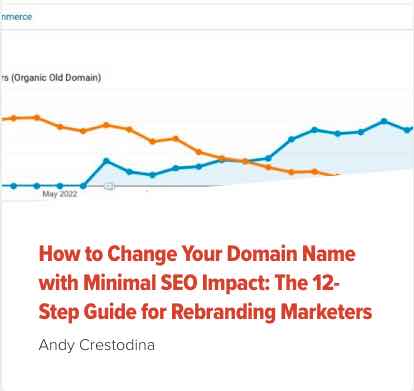
#3 Why type of blog post
The “Why Post” is a great blog post format to explain why a concept is important or why you should be aware of something.
Since “Why” posts are often argumentative, these call for some backup for your arguments. A good why post always includes images, graphics, statistics, or quotes to add more substance to your arguments.
Example: Why Buying Email Lists Is Always a Bad Idea from the Hubspot blog

#4 What-is posts
What-is posts are often introductory pieces. They explain the basic idea behind the topic and give you the facts you need to know when you are new to the concept.
You can add more value to the “What-is” post via links to further reading material if people want to dig deeper into the concept.
Example: What is Blogging? on this blog.
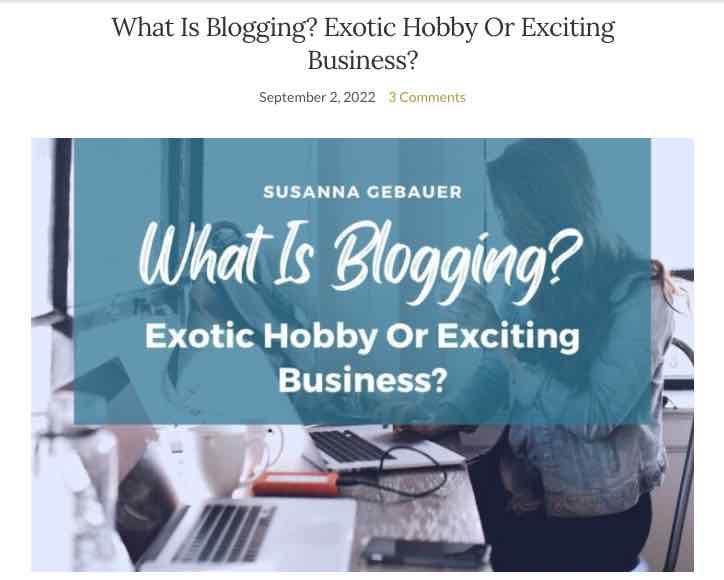
#5 Pillar Content / Content Hubs
Pillar content can have tremendous traffic value. If done right, pillar content can attract more search traffic than “simple” blog posts.
The idea of pillar content is that several blog posts called cluster content link to the pillar content page. This way the cluster content pieces pass some of their SEO value onto the pillar content and help the pillar content to rank better.
Pillar content is often a little more than a blog post. Common formats for pillar pages are ultimate guides or All-you-want-to-know pieces.
You can learn more about pillar content and cluster content in this blog post.
Example: Hubspot’s Pillar Page for Productivity Apps.
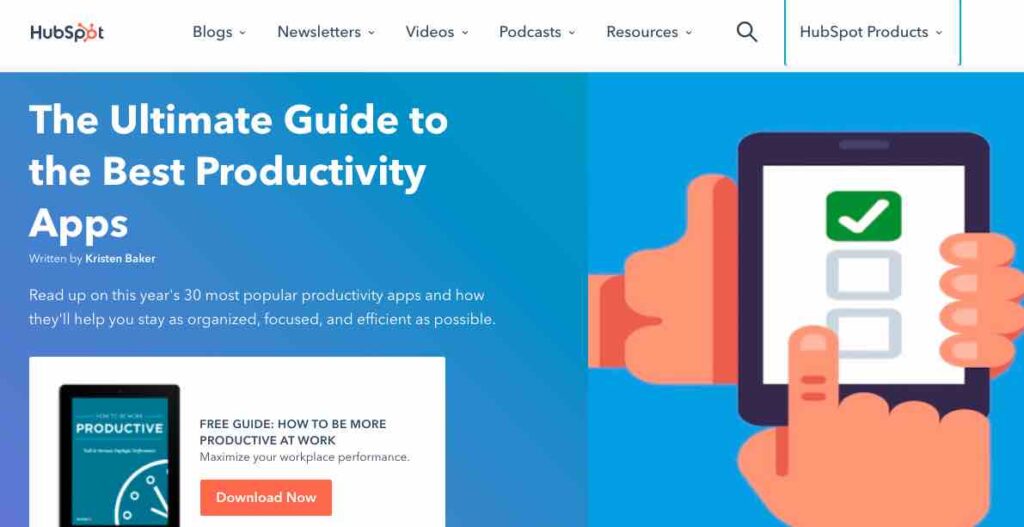
#6 News posts and current events
These blog posts always evolve around some time-sensitive current incident or occasion. The topic of these posts often comes with a high interest in a limited time. After this short time, the interest in the topic usually wears off.
In contrast to evergreen content, news posts and posts about current events tend to grow old and lose value as they turn into cold coffee.
You can use the news post to give an update on current events from your niche in a “What is new to TOPIC in September” post.
Example: For a couple of years, Social Media Examiner posted weekly news updates for social networks.
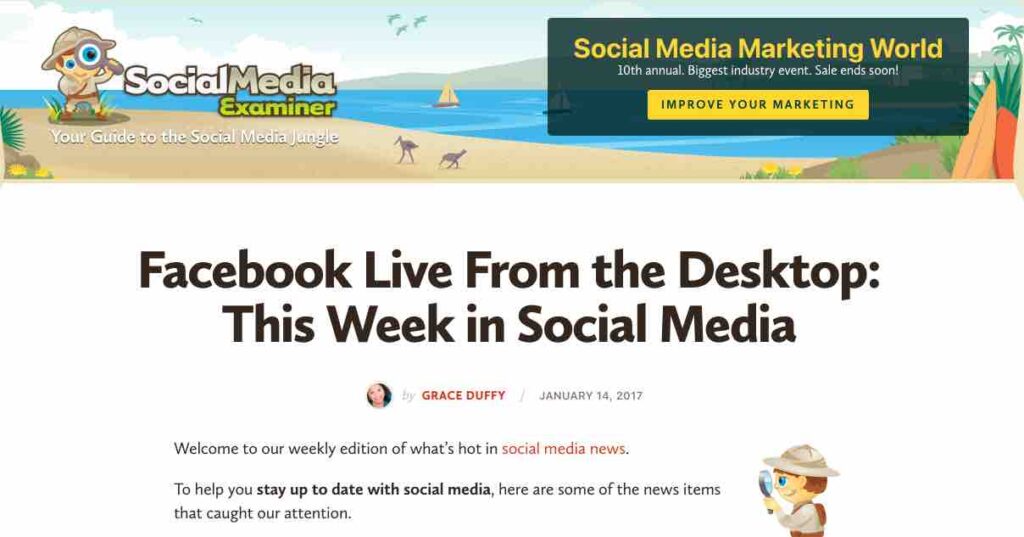
#7 Newsjack posts:
The idea behind newsjacking is that you use breaking news or trending topics to make your message more prominent. If you don’t have hot news to tell, use other people’s news for your own purposes.
The key to successful newsjacking is to see a trend or news coming and have a fitting story ready.
You can use announced news like a launch event or current events.
Newsjacking content is not limited to blog posts, you can also use social media posts, graphics, and more.
Example: One hyper-successful newsjacking stunt was the Dunk-in-the-dark tweet made by OREO during a power outage during super bowl 2013.
Power out? No problem. pic.twitter.com/dnQ7pOgC
— OREO Cookie (@Oreo) February 4, 2013
This tweet not only got hyper-attention on Twitter. The whole newsjacking story was picked up by thousands of marketing blogs making OREO their hero of the day.
#8 Controversial subjects and discussions posts
These types of posts are great to inspire engagement – on your blog or on your social media channels when you share a link to the post or provocative statements from the text.
You can hop on a topic that is already discussed or you can make a statement that goes against common belief.
Example: The (Un-)Desirable Disconnect – Copyblogger’s Brave New World
#9 Checklist posts
A checklist is a little similar to a list post. But the concept is different. You don’t have separate items on your list but you have a list you can follow and cross off as you move along the list.
A checklist usually comes with a ton of very organized value. Take a common task or question and break the process down into manageable steps that are easy to follow. Many people make lists when they plan out a task – your checklist does it for them.
Fill up each step with examples or images and your checklist will become even more valuable.
Checklists for more complicated common problems also make great lead magnets.
Example: The Ultimate Twitter Checklist To Get From Failure To Twitter Fame
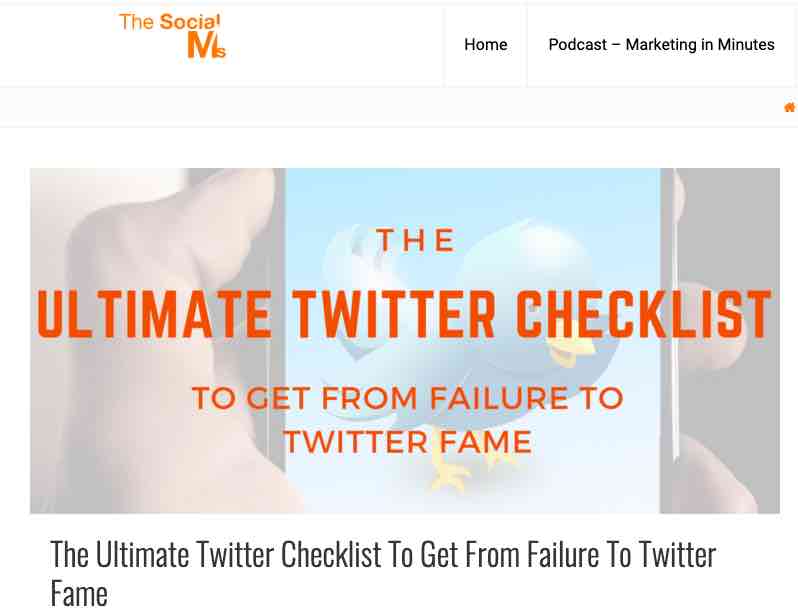
#10 Case Studies
Case studies are personal experiences with doing something or using a product. Often they are used as testimonials or success stories in relation to the sales process.
But that is not always the case. Case studies also make great blog posts that can attract a lot of traffic. You can also create case studies for processes and your own experience.
Example: Content Marketing Case Study: How I Keep Doubling My Web Visitors
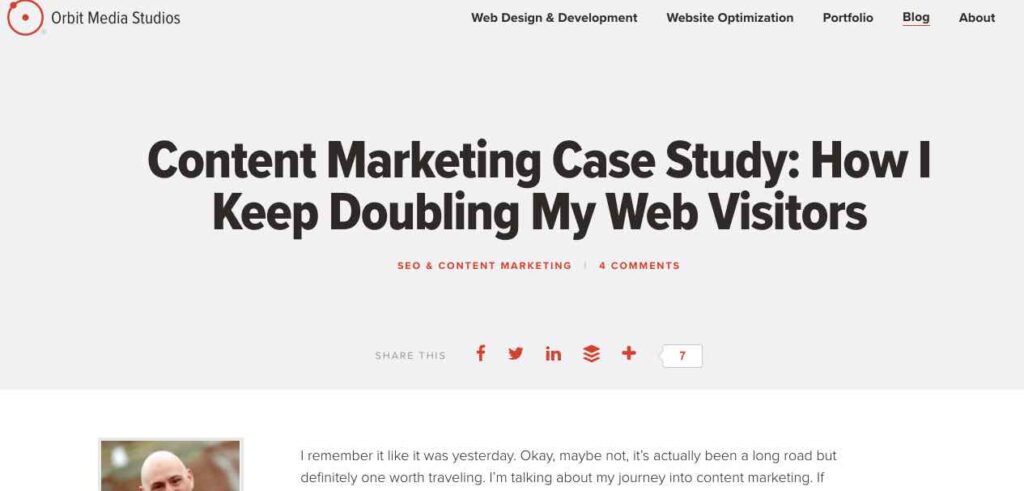
#11 Interview posts
The big advantage of interview posts is that you can get expert opinions on your blog without needing to do all the expertise and research. For written interviews, your part of the work usually includes writing emails to experts asking them if they would be willing to answer a few questions on a specific topic and if they accept you send them the questions.
The blog posts then consist of an introduction, a question-and-answer section, and a little wrapping up.
Interviews often earn you a backlink from the interviewee or at least a share on social media.
#12 Review and comparison posts
People look for reviews of products before they purchase. Positive reviews can be used in the sales process to influence decisions.
On your blog, you can use reviews to drive traffic if you share your experience with a popular product. You can also use reviews to make money via affiliate links.
A review usually contains a description of the features of a product and a list of the pros and cons of using it.
Sometimes a review takes the form of a comparison. If there is more than one solution or product for a task or problem, you can compare two products and give a recommendation on which one you prefer.
Example: Semrush vs. SpyFu: Which Is the Best Tool In 2022?

#13 Expert roundup posts
An expert roundup is a great way to connect to experts and influencers from your niche. The idea is that you ask a couple of experts a set of questions. The answers from the experts will then be presented in a roundup blog post.
An expert roundup is usually a lot of work. You have to contact a number of experts, probably more than you will get answers. To make it easy for the experts to answer your questions you can use a Google form.
The advantage of the expert roundup (in addition to connecting to some experts from your niche) and the expertise on your blog is that at least some experts will help you share the post.
Example: 45 of the Biggest Influencer Marketing Challenges [Expert Roundup]

#14 Curated posts
A curated post is usually a list of blog posts or articles that other people published. You can create a collection of posts around one topic.
Your part in creating this type of post is to research great blog content you can include, plus an introduction to each of the content pieces you list in your blog post.
The advantage of curated posts is again that some of the quoted bloggers will be happy to share this content on their social media channels.
Example: Facebook PPC Success, Creating Quality Video Content & More: The Social Scoop

#15 Problem solution posts
Problems that many people from your audience have are a great driver of traffic. If you can provide a solution – better even if you can provide a simple solution that everybody can use – your blog post is going to become very popular and drive a ton of traffic to your blog.
Example: Fixing Most Common Video Errors and their Solutions
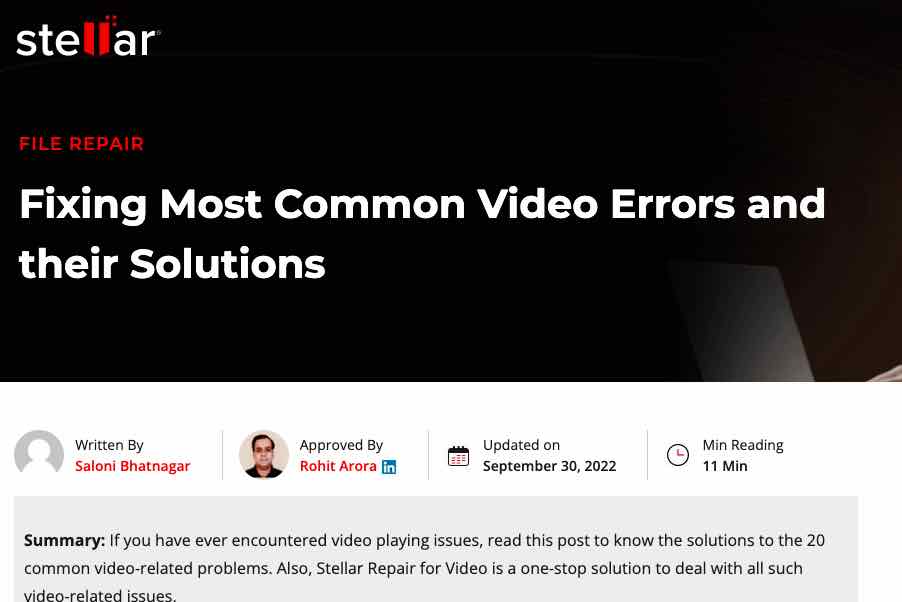
#16 Questions and answers posts
If you are listening to your audience and customers, there will be questions. The chance is high that if one person asks a question other people have the same question.
You can use these questions to inspire new blog content. You can make a (list) post about the most commonly asked questions. I would rather go for one question and the matching answer per blog post. This way you can better optimize for search engines and go more in-depth with your answer.
You can find inspiration for questions-and-answer posts in blog comments, customer feedback, on your social media channels, or in reactions to your email newsletters. I have even found some ideas for blog posts through questions at conferences. The key is to listen to your target audience and hear where their problems are!
Example: Answers to the 19 Most Frequently Asked Questions About A/B Testing
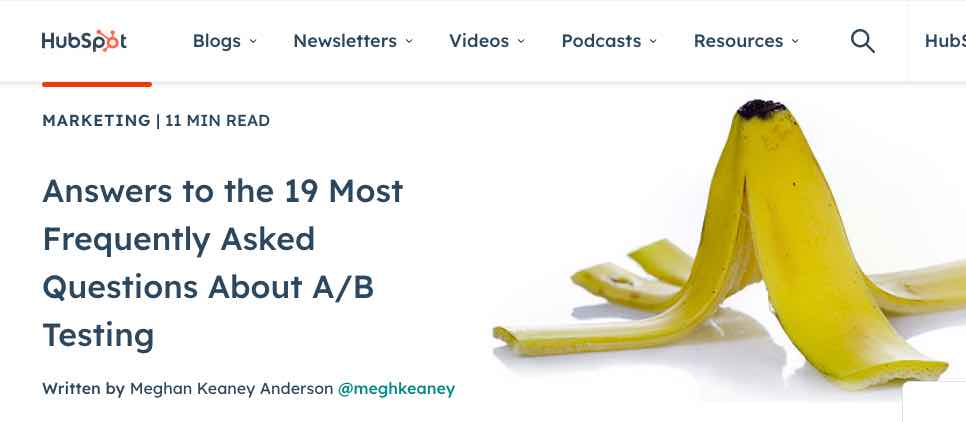
#17 Rant posts or funny stories
Sometimes we all need a smile or even a good laugh. Funny stories and irony is allowed in blogging – they can still be on-topic. Often these posts run well with your social media audience.
If your funny story in addition contains some serious advice or knowledge that your audience can profit from: even better.
Fun posts or rants can simply be from a slightly different angle from do-this-do-that posts. You can write from the “you have it all wrong” angle and make your arguments a little over the top. This can still be educational.
Example: 11 Sorry Excuses for Content That You Shouldn’t be Sharing

#18 Beginners guides
Beginner’s guides are a great place for newbies to a subject to start. You can also use them to provide a little more insight than a usual blog post – and use them as content pillars.
A beginner’s guide can be a great post to attract new people to your blog. Just make sure that you explain everything in terms that a beginner is able to follow. A beginner’s guide should not be packed with terms that need explanations.
Beginner’s guides often contain a step-by-step description of how something is done.
Example: Welcome to The New Google SEO Guide!

#19 Myths debunking posts
In every niche, there are some common beliefs that are utterly wrong. If you work with customers in your field, you will stumble across them. You can also listen to social media. These “facts” that are wrong are all around.
It is fun to write a post debunking some of them. And often this post has tremendous value for people not so deep into the topic you are writing about.
Example: 23 Social Media And Digital Marketing Best Practices That Are Actually Myths
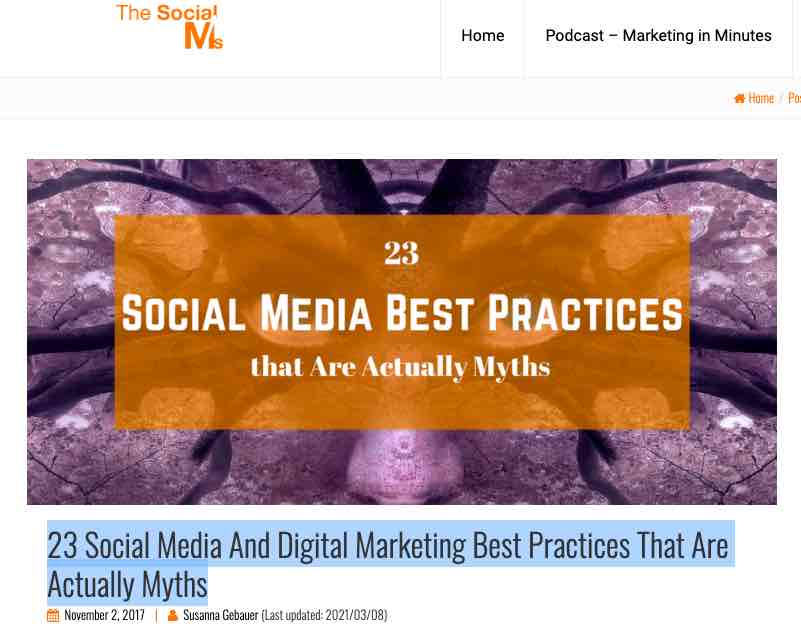
#20 Personal stories posts
Your personality is important for blogging success. That is why personal stories can tremendously increase the value of a post – or a product if you will.
As an example, consider GoFundMe crowdfunding projects. The best-running GofundMes always have an interesting – often sad – story to go with it. The more story you provide the more money you often are able to raise.
Stories can turn something boring into something entertaining. Stories can contain emotions that help to connect to your audience and make them act.
Example: The ROI of Storytelling
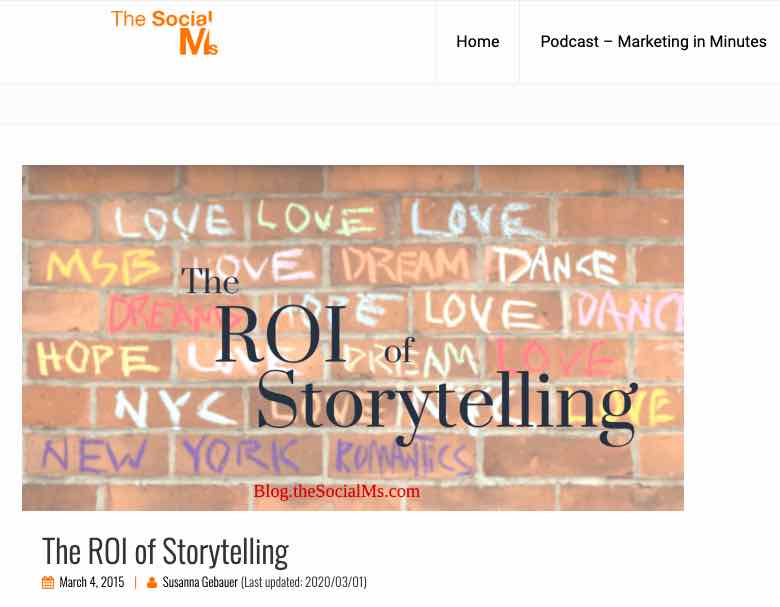
The reason these story posts work so well is that they often trigger emotions. And emotional content is a trigger for action.
#21 The infographic post
You can create infographics for almost any topic or type of blog post. Infographics used to be all the rage on Pinterest and other social media channels a couple of years back. In recent years, that hype has calmed down a little. But infographics still have a special place in the marketing arsenal and you can use them well in your marketing.
I get a lot of requests for publishing infographics. Usually, there is a smaller text or post going with the infographic. People like sharing infographics – and every time someone posts the infographic or part of the infographic you earn a backlink. Smaller infographics – or excerpts from infographics – are great to post on social media channels.
That is why infographics are often a link bait or link-building tactic.
Example: Are You an Intelligent Marketer? [Infographic]

Combining several types of blog posts in one blog post
Sometimes it makes sense to combine several of the above blog post formats. There are many situations when more than one of the above types could be used to cover your topic. In that case, you may want to make an either-or decision and use ONE of the above types of blog posts. However, sometimes it makes sense to combine more than one of the above types of blog posts.
You may already have noticed that some of the above examples combine lists with another blog post format.
Why should a list post not be the answer to a why question? Here is an example of how you can combine a why and a list post. This post is also a problem-solution post:
Why is My Google Analytics Inaccurate? 21 Ways Your Google Analytics is Wrong and How to Fix It.

Final words on types of blog posts
There are no wrong types of blog posts. But there are some blog post formats that resonate well with certain audiences and topics. By knowing and recognizing these types of blog posts you can figure out what your audience likes and focus on providing more of these blog posts.
Also, recognizing certain types of blog posts can help to structure your post and make them easier to create.
Choosing a format for your blog post is only a small step in the content creation process. Here are tips and tricks to help you create better content.

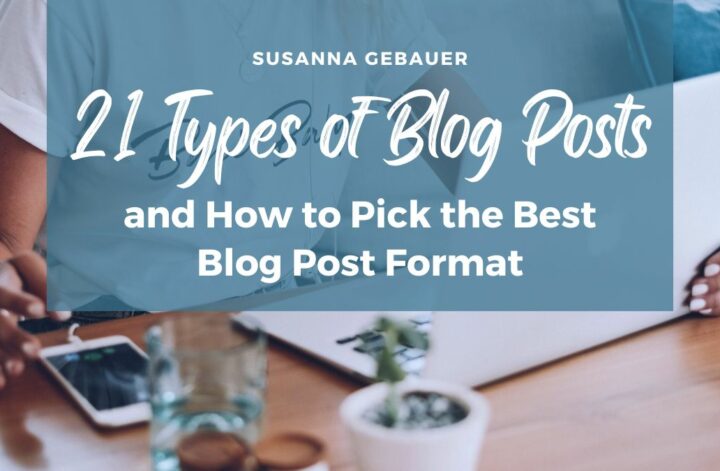
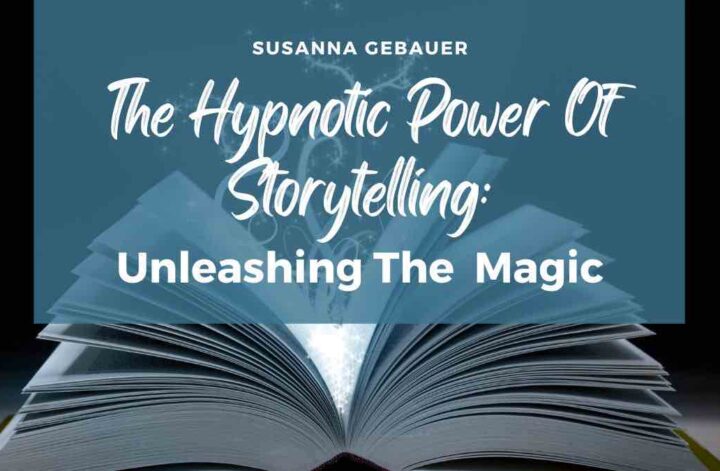
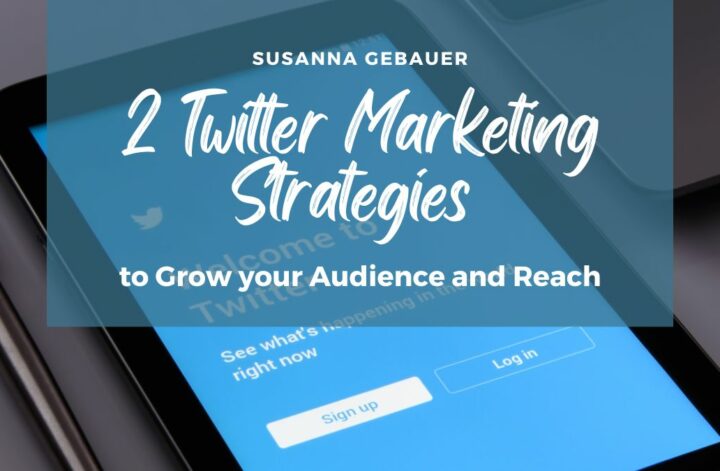
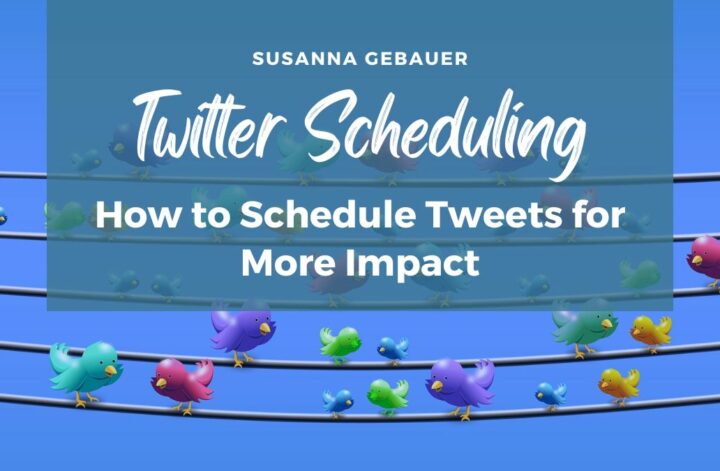
2 Comments
Thanks for the great article!
Thank you! I am so glad you like it and find it useful.
Best,
Susanna